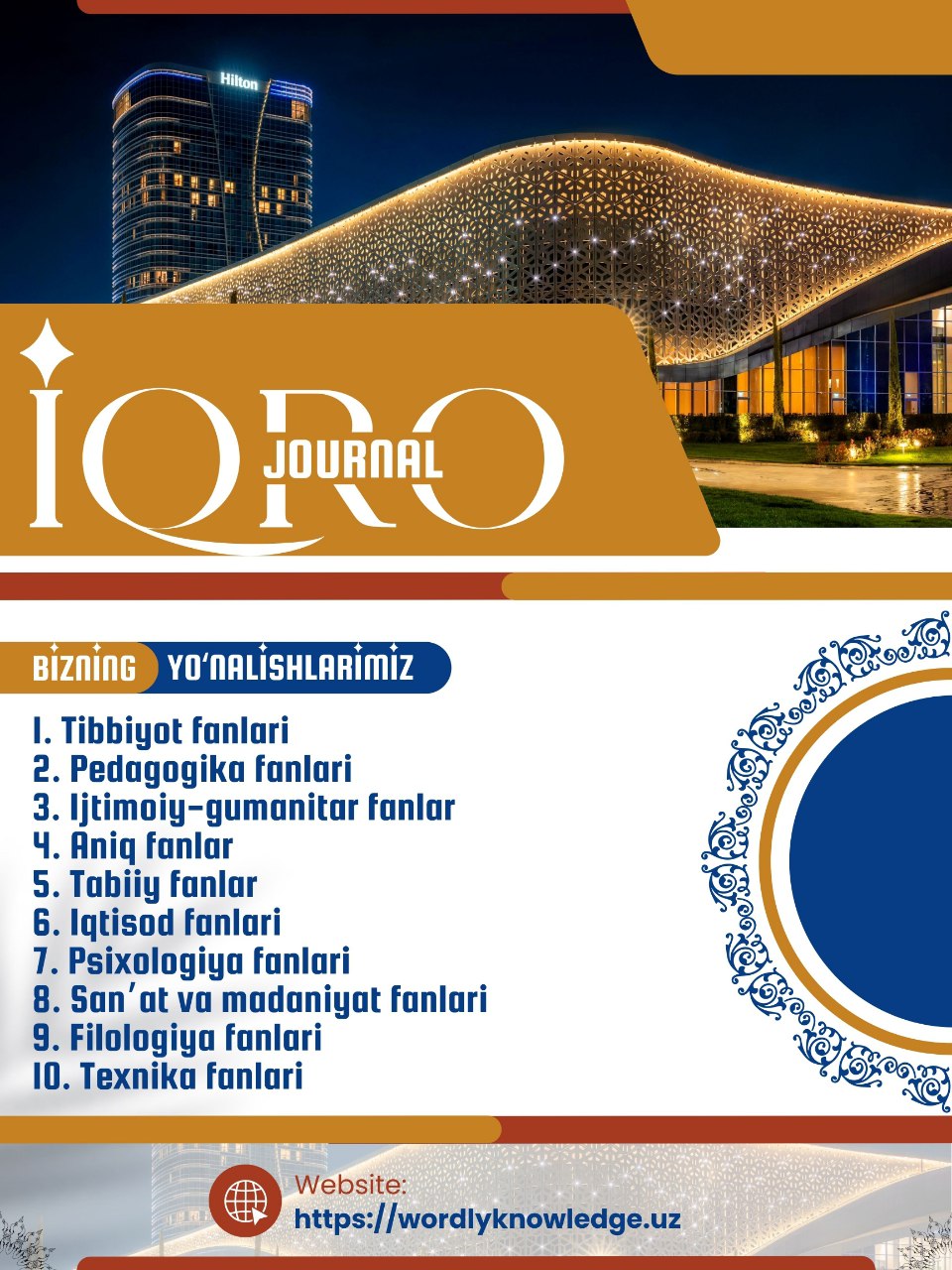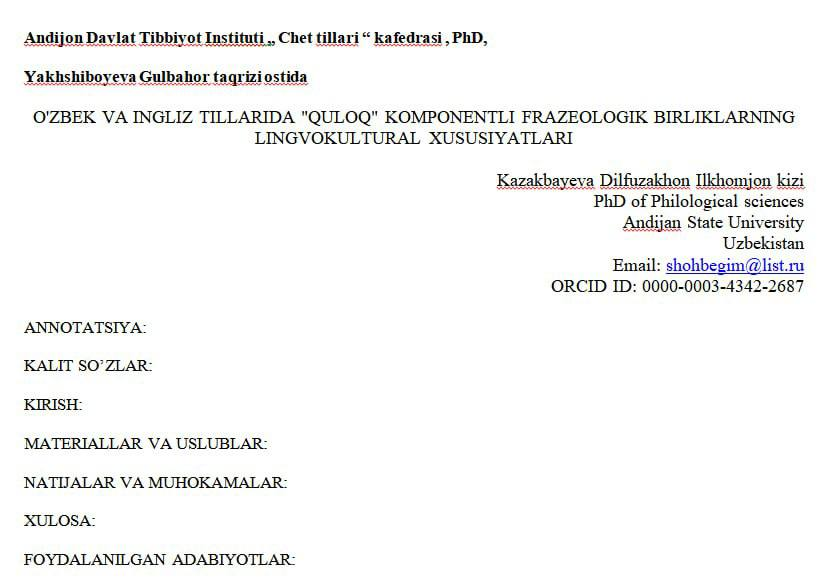METHODOLOGICAL BASIS OF CHECKING THE INDICATORS OF PHYSICAL DEVELOPMENT OF CHILDREN AND ADOLESCENTS
Keywords:
physical development, children, adolescents, anthropometric measurements, physical fitness, body composition, health assessment, standardized protocols, cultural sensitivity.Abstract
This article discusses the methodological foundations for assessing the physical development indicators of children and adolescents. It highlights the importance of monitoring physical growth through anthropometric measurements, physical fitness assessments, and body composition analysis. The article emphasizes standardized data collection techniques, ethical considerations, and the need for cultural sensitivity. Key indicators include height, weight, BMI, endurance, strength, and flexibility. The analysis of these indicators aids in identifying health issues and promoting overall well-being.
References
1. Häkkinen, K., & Komi, P. V. (2001). Strength and power in sport. Blackwell Science.
2. Hoffman, J. R., et al. (2005). Physiological assessment of human fitness. Human Kinetics.
3. Jackson, A. S., & Pollock, M. L. (1978). Generalized equations for predicting body density of men. *British Journal of Nutrition*, 40(3), 497-504.
4. Kyle, U. G., et al. (2004). Bioelectrical impedance analysis—part I: Review of principles and methods. *Clinical Nutrition*, 23(5), 1226-1243.
5. Kuczmarski, R. J., et al. (2000). 2000 CDC Growth Charts for the United States: Methods and development. *Vital Health Stat*, 11(246).
6. Leger, L. A., et al. (1988). The multistage 20 meter shuttle run test for aerobic fitness. Canadian Society for Exercise Physiology.
7. Must, A., & Anderson, S. E. (2006). Body mass index in children and adolescents: Considerations for population-based applications. International Journal of Obesity, 30(4), 590-594.
8. Naylor, P. J., & Nettlefold, L. (2020). Physical activity in children and youth: A global perspective. *Canadian Journal of Public Health*, 111(1), 1-5.
9. Pate, R. R., et al. (1996). Physical activity in children and youth: A global perspective. Journal of Physical Activity and Health, 1(1), 1-5.
10. Raitakari, O. T., et al. (2003). Cardiovascular risk factors in childhood and the development of adult disease: The Cardiovascular Risk in Young Finns Study. American Journal of Preventive Medicine, 25(2), 196-202.
11. Rowland, T. (1990). Children's exercise physiology. Human Kinetics.
12. Sallis, J. F., & Patrick, K. (1994). Physical activity guidelines for adolescents: A review. *Pediatrics*, 93(4), 487-491.
13. Telama, R., & Yang, X. (2000). Decline of physical activity from childhood to adulthood: A 21-year tracking study. *Osteoporosis International*, 11(2), 121-126.
14. Troiano, R. P., et al. (2008). Physical activity in the United States measured by accelerometer. *Medicine & Science in Sports & Exercise*, 40(1), 181-188.
15. U.S. Department of Health and Human Services. (2008). *Physical activity guidelines for Americans*. Washington, DC: U.S. Government Printing Office.
16. WHO. (2020). *Physical activity*. World Health Organization.














